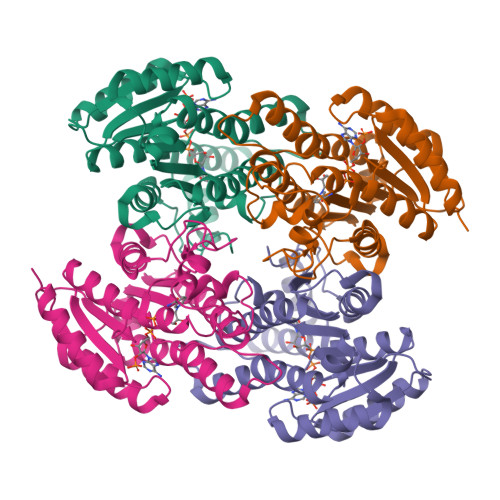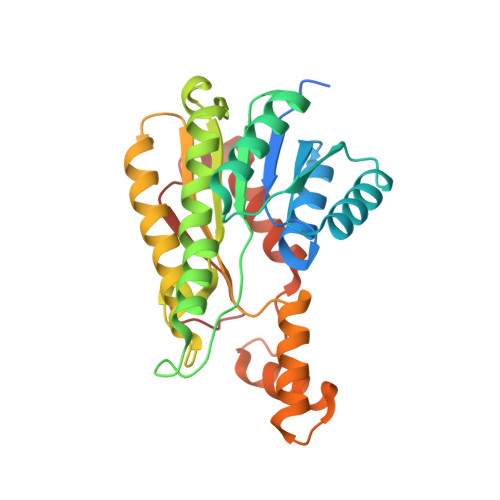The Determinants of Activity and Specificity in Actinorhodin Type II Polyketide Ketoreductase.
Javidpour, P., Bruegger, J., Srithahan, S., Korman, T.P., Crump, M.P., Crosby, J., Burkart, M.D., Tsai, S.C.(2013) Chem Biol 20: 1225-1234
- PubMed: 24035284
- DOI: https://doi.org/10.1016/j.chembiol.2013.07.016
- Primary Citation of Related Structures:
4DBZ, 4DC0, 4DC1 - PubMed Abstract:
In the actinorhodin type II polyketide synthase, the first polyketide modification is a regiospecific C9-carbonyl reduction, catalyzed by the ketoreductase (actKR). Our previous studies identified the actKR 94-PGG-96 motif as a determinant of stereospecificity. The molecular basis for reduction regiospecificity is, however, not well understood. In this study, we examined the activities of 20 actKR mutants through a combination of kinetic studies, PKS reconstitution, and structural analyses. Residues have been identified that are necessary for substrate interaction, and these observations have suggested a structural model for this reaction. Polyketides dock at the KR surface and are steered into the enzyme pocket where C7-C12 cyclization is mediated by the KR before C9-ketoreduction can occur. These molecular features can potentially serve as engineering targets for the biosynthesis of novel, reduced polyketides.
Organizational Affiliation:
Department of Molecular Biology and Biochemistry, University of California, Irvine, Irvine, CA 92697, USA.

















